
That first morning of our Defining Practice course we sat in a circle in the sunny yard behind the Victorian school building to introduce ourselves and to hear how the day – and our year together! – was going to begin. Those of us who had taken a Newlyn School of Art course previously were delighted to have Faye Dobinson as Lead Tutor. We knew she would guide us through the year with her characteristic wit, enthusiasm and sensitivity – everyone loves Faye because she gives and cares so much.
Our professions ranged from doctor, art teacher and graphic artist to city designer, writer and Geography undergraduate, but we were all there for the same reason: to improve our art. When asked why she had chosen Newlyn, fellow-student Penny Chivers Stanley, a teacher and mother of four, said she had chosen the course “… to extend and improve my art skills. I knew Newlyn had rigour, quality tutors and a good reputation. It would help me consider my techniques and thoughts to improve my practice. I wasn’t in a position to do a foundation course or degree, but I wanted a course that had that level of importance – that was going to challenge me.”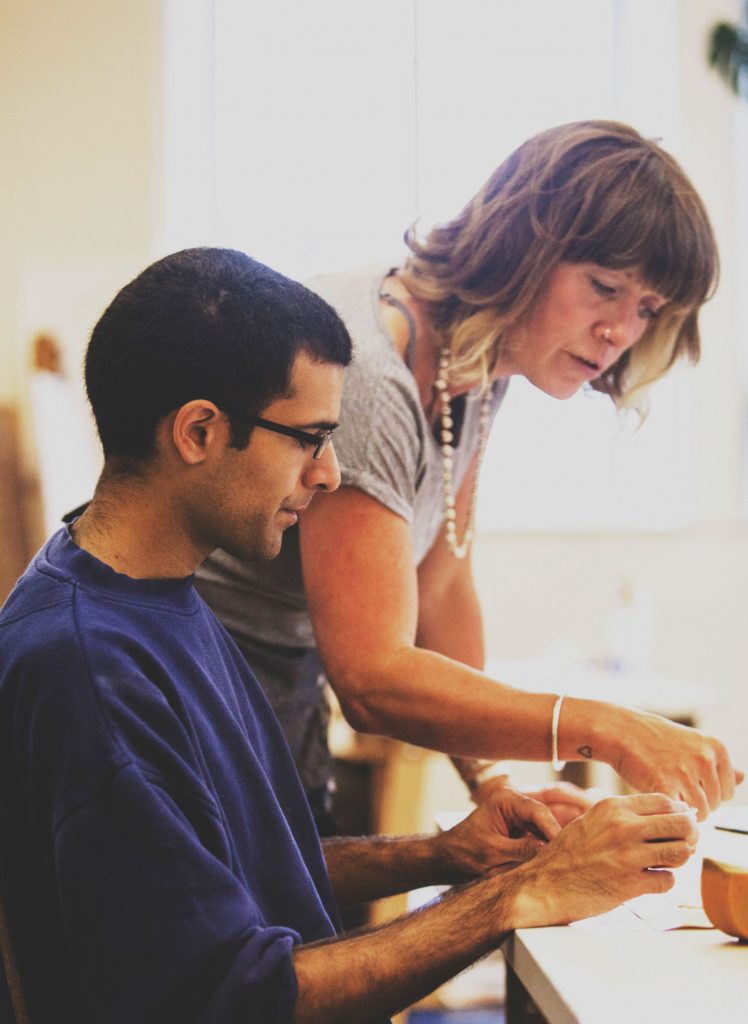
Penny was streets ahead of me. I just wanted to know whether my existing painting practice could ever amount to anything. I was looking forward to engaging in a bunch of new techniques, narrowing down what I responded to, what I was good at and what I liked. My practice would apparently be ‘defined’. One-to-one tutorials were also on the agenda, and I liked the sound of the class line-up with the tutors – all experts in their fields – apparently laying bare the secrets of their practice.
From the outset I knew that many of the classes were exactly what I wanted to do. I loved the portrait painting where, under the energetic directions of Jesse Leroy Smith I painted my first ever portrait of a live model onto a linen canvas. It was hard but I learnt a huge amount from him in just a few hours. Printing with John Howard was experimental, fun and well-delivered. He was generous with his knowledge, and seemed to effortlessly engage with each of us and our work throughout the two days.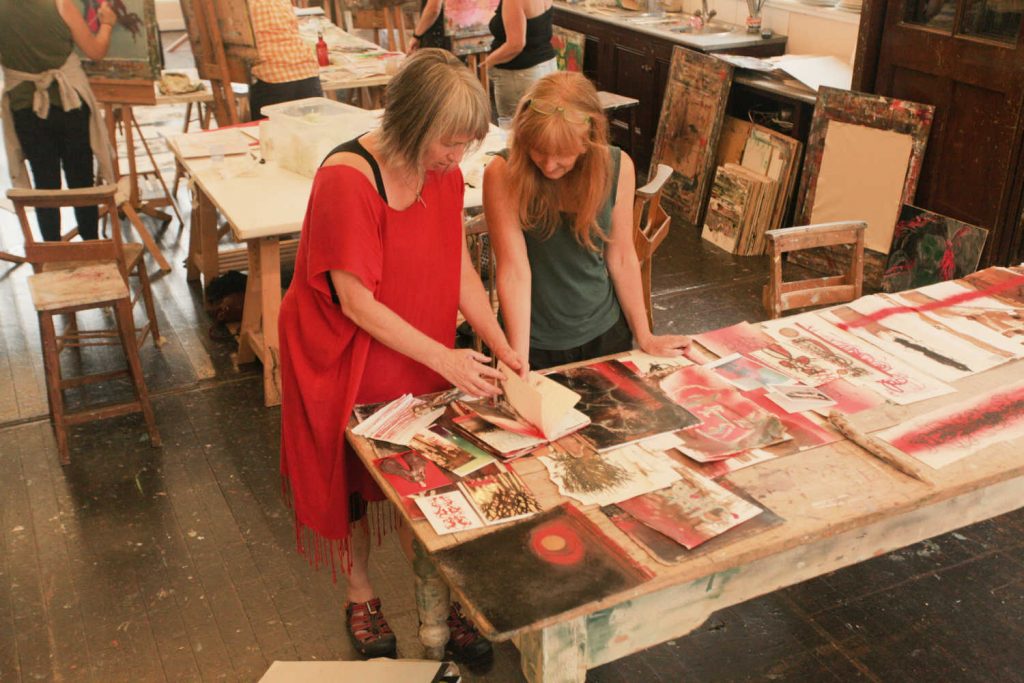
Anita Reynolds, a brilliant curator of wild places, was funny, inspiring and unbelievably prolific… could I ever amass a body of work like hers?
Inevitably other classes were initially outside my comfort zone. At first, I found the ‘responding to place’ class tricky. On an industrial Newlyn beach we were invited to photograph the place and play with the sense of scale and reality. While students worked on the shore and in the sea with 30x30cm squares of mirror and Perspex I retreated inland, uncomfortable and diffident, ultimately photographing a patch of nasturtiums whose leaves had collected that morning’s rainfall. Back in group class, at first I felt embarrassed that my photographs were prosaic compared to the ingenious shapes and optical illusions other students had contributed, but the important message I learn was that if I was drawn to the nasturtiums then I should ‘own it.’ Eight months later I’m now working on translating my photographs into a painting, because the images of the raindrops on the leaves remain exquisite and exciting to me. So despite my initial discomfort the lesson was to pay attention to what you’re interested in, let it surprise you and act on it. There is no right or wrong.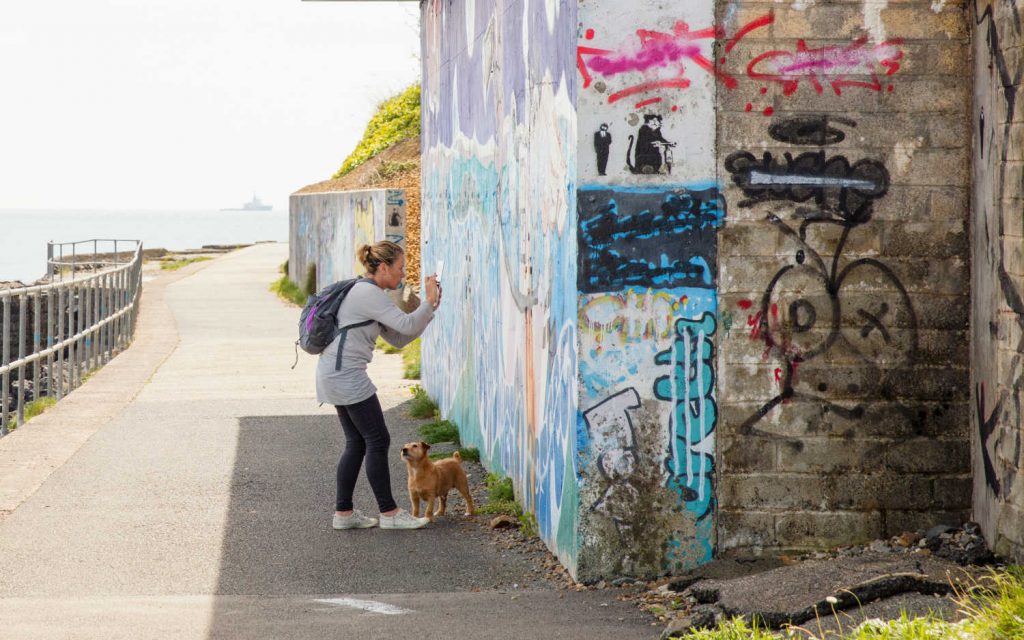
Defining Practice enables students to gain guidance from inspirational artists who are confident enough in themselves and in their practice to share a vast wealth of knowledge generously. For example, getting started on a piece of work is not the problem that it used to be for me because of Jesse’s advice, “When faltering, make three decisions quickly! If you only have 20 minutes in the studio then make that 20 mins count.” And when I said I wanted to learn how to paint water but didn’t know how to start, Faye sensed I was expecting some magic solution. Her reply? “There’s no getting around it. You’ve just got to lean in and do it.”
Our artistic insecurities need to be addressed and turned into strengths, and this is what Faye and the other tutors so skilfully deliver. When I told tutor Jessica Cooper that I feel like a kid when I paint she said, “Never lose that joy!” That phrase has stayed with me, and I think of it every day. Defining Practice isn’t just a course about technique, but also about you and who you are. It magnifies your strengths, your faults and your attitudes – they’re all out there in the open – making your practice so much stronger.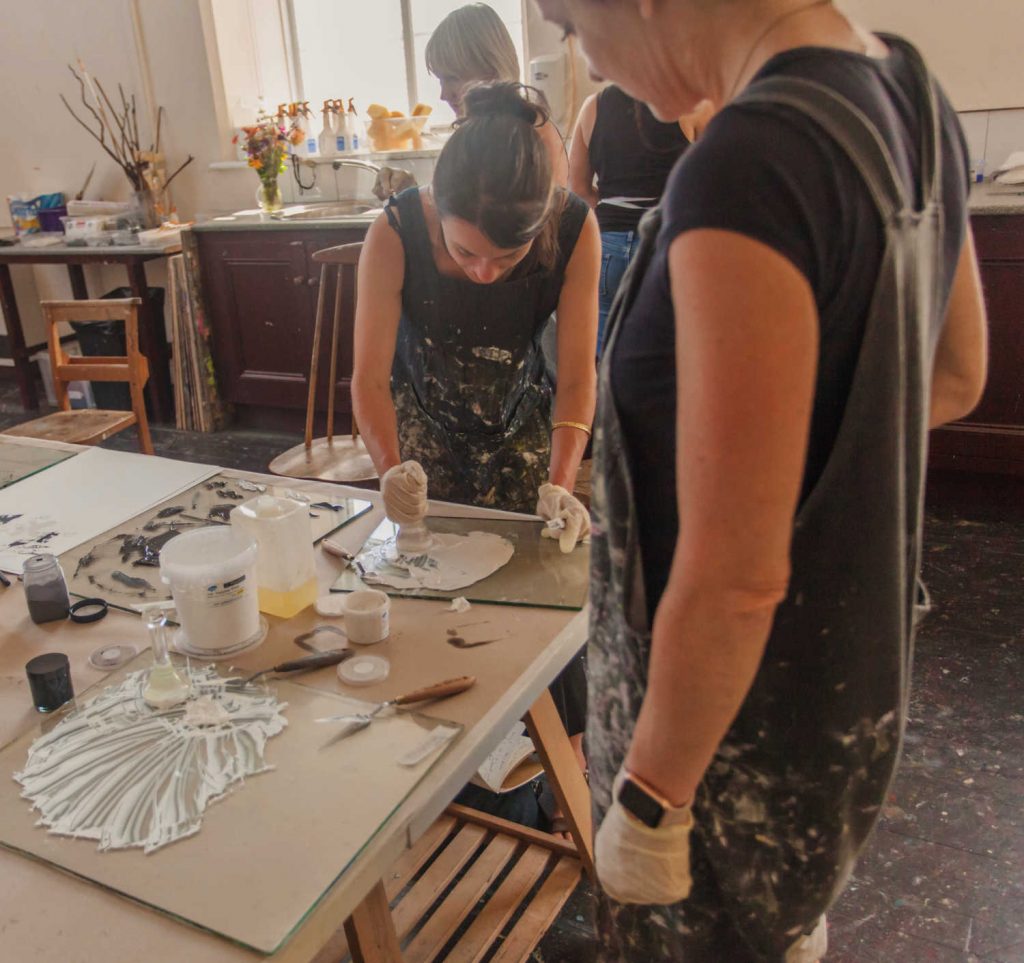
Spending time at Newlyn School of Art also enables a connection with a great artistic community. Talking to fellow artists – whether tutors or fellow students – means I’m excited and inspired by the things that they are doing. I’m proud of their achievements – envious too of course, and occasionally kicked up the arse by them. I mean, if they’re doing all these things (the open studios, the exhibitions, the interior design installations) then surely I can too.
Penny Chivers Stanley has picked up the ball and run with it. Her forthcoming two-woman exhibition “Can You See Me?” (at the Jupiter Gallery, Newlyn from August 29th – 3rd September, 2022) is in collaboration with fellow Defining Practice 2022 graduate, the visual artist Emma Digerud-White. I asked Emma what the Defining Practice course had done for her.
“It did exactly what it promised. It enabled me to define my practice and to connect in my work the ‘why’ and ‘how’. I approach my work in a much more integrated way. Me and my work are no longer separate things. I would recommend this course to all artists, whether just starting out, looking for a new direction or simply to understand your practice more. I feel incredibly lucky to have had this experience and grateful that this wonderful school exists!”
My fellow Defining Practice students and I have all stayed in touch. We loved the 8-week pulse of the course: getting our work ready, having something to work towards and seeing our colleagues and tutors again either in the classroom or at group suppers during the course. When the course was finished we missed that sense of connection and progress, and so now meet on Zoom every couple of months. Via social media we ask each other questions about techniques and materials, display our work and chat and as friends and fellow artists there’s talk of trips to galleries in Venice and London.
I asked a fellow student Mark Pearce, co-founder and Creative Director for Creative Mile Festival, what he got out of the Defining Practice course.
“I think more like an artist,” he says. “It informs pretty much everything I do and has helped me to think big. After doing the course I’m approaching the festival as an artist – rather than an organiser. It’s almost like I’m viewing the town as a canvas, which means that I’m also developing my network. I’ve learnt that it’s not just how good you are at painting, it’s equally about promoting yourself and getting your work seen.”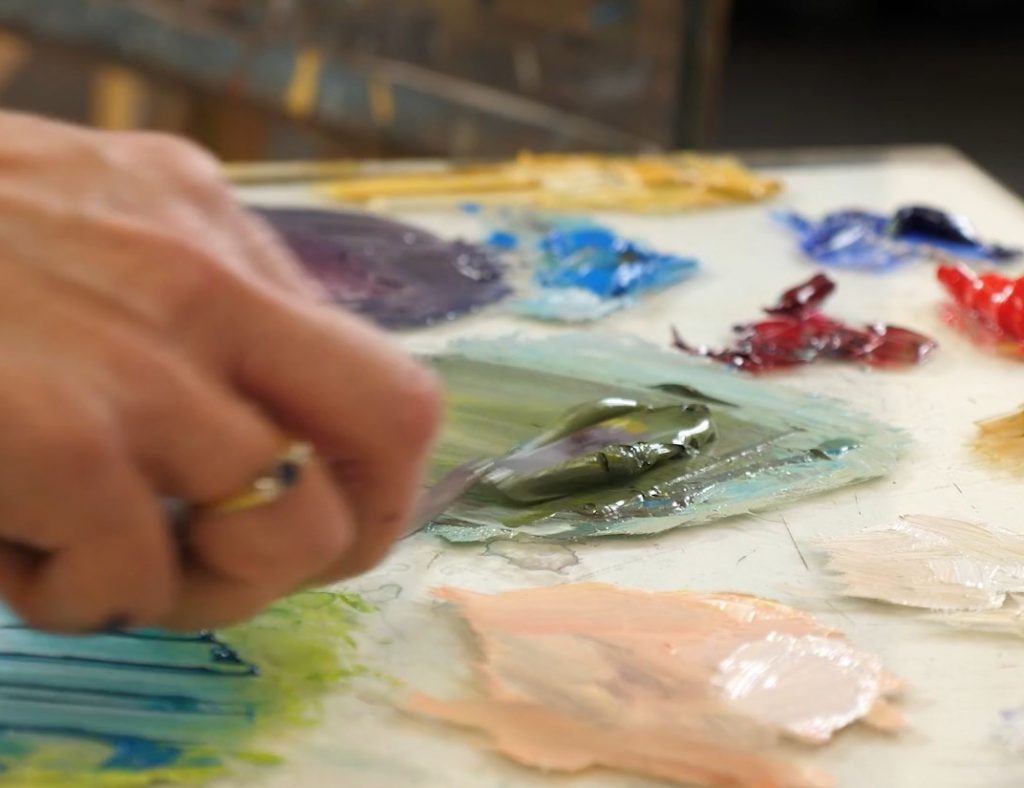
Jane Crawshaw, a physics teacher, told me that Defining Practice has completely opened up her approach to art.
“A great strength of the course was that we all had very different artistic styles and experience, with some already working professionally in creative fields. It was so interesting to hear people talk about their work, hear their ideas and to see how their art developed. It added important depth to the course.”
When I met him for the first time the other day I asked Henry Garfit, Founder and Co-Director of Newlyn School of Art (with his wife Sasha), why good practice is so important.
“More often than not great art comes from the artist building a really rich practice,” he said. “When they allow themselves to expand artistically they begin to learn that it’s the rough, the colourful and the awkward – not necessarily just the pretty – that makes their work rich, interesting and valuable.” Funnily enough, if I had to pick just three words to describe the Defining Practice course those are the exact ones. Rich, Interesting and Valuable.
Find out more and see a short film about the course on the Defining Practice Course Page
Blog article by Fanny Johnstone
Top artwork by James Hankey Visiting Tutor on the Defining Practice Course